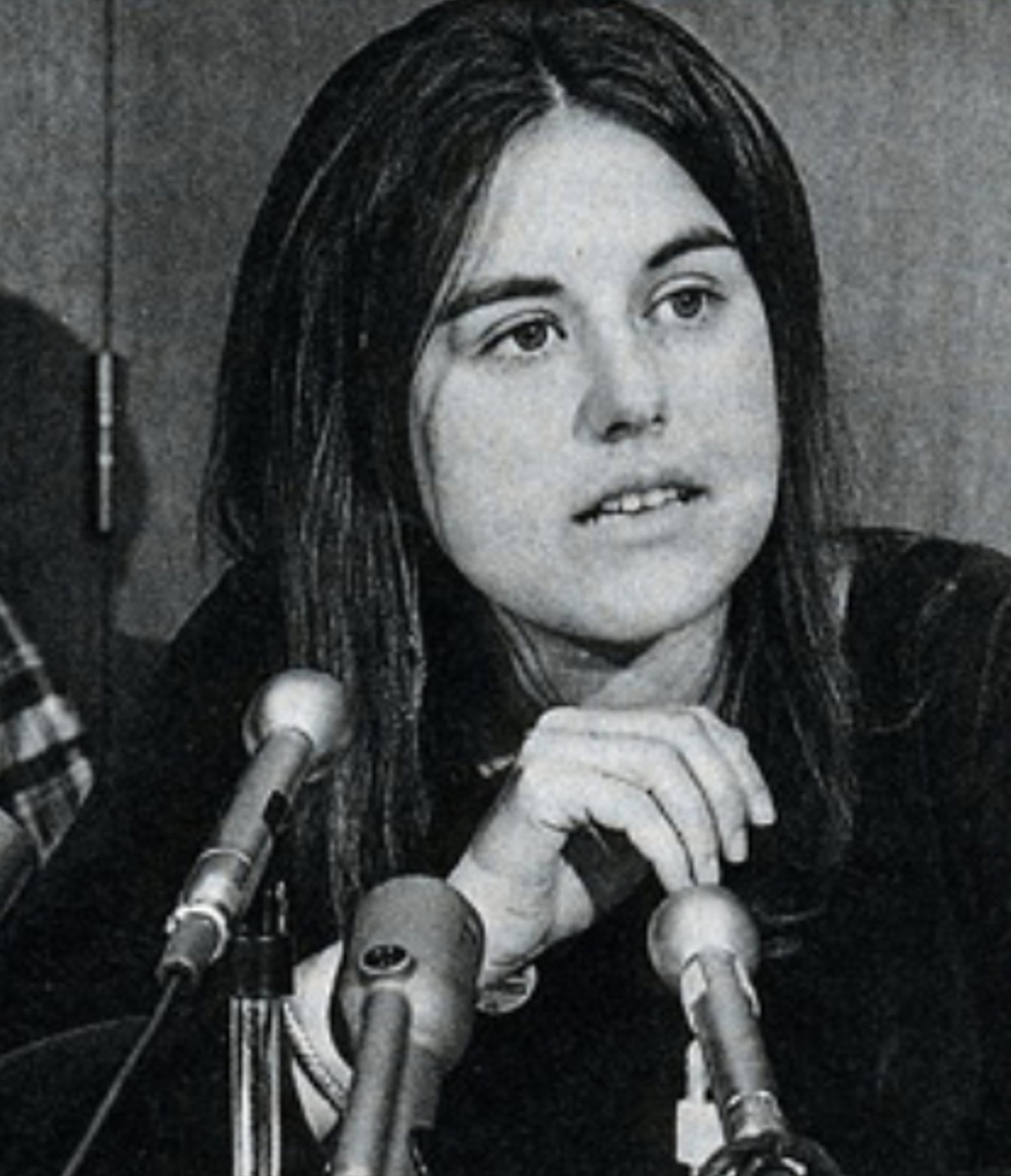By Lynn Burnett
As a radical law student in the late 1960s, Bernardine Dohrn helped the National Lawyers Guild organize young lawyers to defend antiwar and racial justice activists. She was swept deeper into the movement at a time when the Black freedom struggle was radicalizing, as it confronted increasing police brutality and the assassinations of its leaders, faced the limitations of the civil rights movement to tackle systemic racism, and as it made stronger connections between imperial wars abroad, globalized economic inequality, and White supremacy.
During this time both SNCC and the BPP called for White racial justice organizers to go into the belly of the beast – into White communities across the U.S. – and organize White communities to support racial justice. When Bernardine became a leader within the most radical wing of the Students For A Democratic Society – a wing that morphed into the Weathermen – she played a key role in translating those ideas to the White student movement.
A turning point for Bernardine and the Weathermen came in the winter of 1969, when photos of the Mỹ Lai massacre were released to the public during the same month that their comrade Fred Hampton was assassinated by police while he slept in his bed. The Weathermen feared that state violence would continue to escalate, and that the surveillance and infiltration of antiwar and racial justice groups would intensify even further. Bernardine and the Weathermen went underground, to keep part of the movement alive and functioning even as state violence and surveillance increased. For the remainder of the Vietnam War, the group – now called the Weather Underground – conducted bombings of the institutions they held responsible for that violence. These bombings led Bernadine, as the group’s leader, to become one of the first women to be placed on the FBI’s most-wanted list… a distinction shared by her friends Angela Davis and Assata Shakur.
Bernardine stayed underground with her husband Bill Ayers until 1980, after which she served seven months in prison for refusing to testify before a grand jury against other Weathermen. By the early 90s she had transformed herself into a leading figure for juvenile justice reform. She remains active in racial justice movements today.
Additional Resources
Suggested starting point: Mother Country Radicals: A Family History of the Weather Underground. (Podcast.)
Weather Underground Founding Statement: You Don’t Need A Weatherman To Know Which Way The Wind Blows.
Books
Bill Ayers: Fugitive Days: Memoirs of an Antiwar Activist.
Bills Ayers & Bernardine Dohrn:
- Race Course: Against White Supremacy.
- Sing a Battle Song: The Revolutionary Poetry, Statements, and Communiques of the Weather Underground 1970-1974.
Dan Berger: Outlaws of America: The Weather Underground and the Politics of Solidarity.
Bernardine Dohrn (with other editors): A Century of Juvenile Justice.
Arthur M. Eckstein: Bad Moon Rising: How the Weather Underground Beat the FBI and Lost the Revolution.
Articles
Bernardine Dohrn: Collection of articles at Huffpost.
Alessa Dominguez: Bernardine Dohrn Was Called The Most Dangerous Woman In America. Now, Her Son Reconsiders Her Legacy.
Nick Fraser: Days of Rage: America’s Radical Underground, the FBI and the Forgotten Age of Revolutionary Violence.
Jonah Raskin: Never the ‘good girl,’ not then, not now: A Rag Blog interview with Bernardine Dohrn.
Videos
Appearances on C-SPAN.
Democracy Now!
- “Mother Country Radicals”: Weather Underground’s Bernardine Dohrn & Bill Ayers’s Son Makes New Podcast.
- Bill Ayers and Bernardine Dohrn on the Weather Underground, the McCain Campaign Attacks, President-Elect Obama and the Antiwar Movement Today.
Documentaries:
Original newscast: Weather Underground Bombs the Capitol, Pentagon, and State Department.
